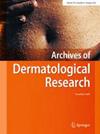Factors influencing laser test spot practices among dermatologists: a cross-sectional survey of the association of academic cosmetic dermatology members
Abstract
Laser treatments are associated with adverse events such as pain, dyspigmentation, and scarring. Laser test spots may mitigate these risks by assessing patients’ skin reactions before full treatment. We aim to explore the factors influencing dermatologists’ use of test spots. A survey on the factors influencing dermatologists’ use of laser test spots was conducted among Association of Academic Cosmetic Dermatology members. Sixty-six dermatologists took part in this study, resulting in a response rate of 48.2%. Top factors influencing the decision to perform a test spot include “darker skin type” (96.9%) and the “type of laser” (71.9%). A majority of dermatologists believe patients feel more comfortable if a test spot is performed (87.3%). Common reasons dermatologists chose not to perform test spots include “familiarity with the patient's skin type and reaction” (87.9%) and “using a laser type/setting with well-known outcomes based on previous experience” (86.4%). This study provides crucial insights into factors influencing dermatologists' use of laser test spots and underscores the importance of developing standardized protocols. Future research is needed to assess changes in laser test spot practices over time and to develop standardized guidelines to improve treatment safety and efficacy.

 求助内容:
求助内容: 应助结果提醒方式:
应助结果提醒方式:


